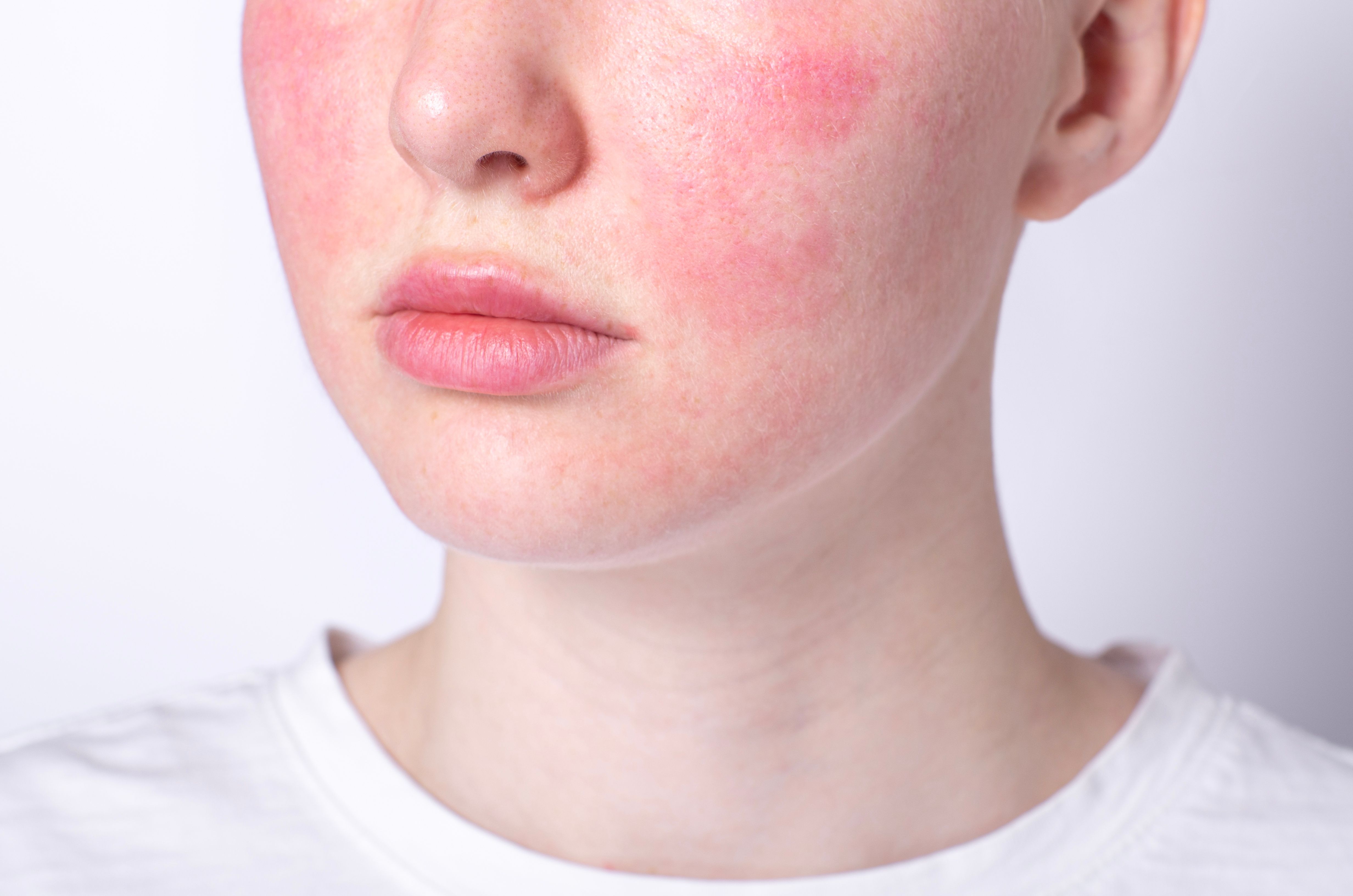- Acne
- Actinic Keratosis
- Aesthetics
- Alopecia
- Atopic Dermatitis
- Buy-and-Bill
- COVID-19
- Case-Based Roundtable
- Chronic Hand Eczema
- Chronic Spontaneous Urticaria
- Drug Watch
- Eczema
- General Dermatology
- Hidradenitis Suppurativa
- Melasma
- NP and PA
- Pediatric Dermatology
- Pigmentary Disorders
- Practice Management
- Precision Medicine and Biologics
- Prurigo Nodularis
- Psoriasis
- Psoriatic Arthritis
- Rare Disease
- Rosacea
- Skin Cancer
- Vitiligo
- Wound Care
News
Article
Review Finds Topical Erythromycin, Azithromycin, and Metronidazole Most Common Treatments for Pediatric Rosacea
Author(s):
Additionally, investigators found that several patients in the review had rosacea induced or exacerbated by the use of topical corticosteroids on the face.
iso100production/Adobe Stock

In a recent systematic review1 of the efficacy of therapeutics for pediatric rosacea, investigators found that erythromycin, azithromycin, and metronidazole were the most common topical formulations prescribed to patients. Furthermore, they found that topical corticosteroids, in some patients, led to induced or exacerbated rosacea when applied to the face.
Study authors Geng et al sought to identify treatments for pediatric patients with rosacea, noting that the prevalence of rosacea in this patient population is rare and lacks specified treatment recommendations, research, and more. They also sought to make a determination of the efficacy of these treatments in young patients.
Using databases CINAHL, EBM Reviews, Embase, and Medline, investigators searched for papers and research using search terms such as "rosacea," "idiopathic facial aseptic granuloma," "perioral and periorificial dermatitis," "pediatric," and other relevant or related terms from the start of the respective databases' collections through September 2023. In total, 2,251 articles were accumulated.
Included studies and papers, exclusively case reports and case series, were required to involve patients below the age of 18 years old, report clinical outcomes, and involve the use of topical, systemic, and other non-pharmaceutical therapeutic options.
Treatment efficacy was defined as either partial or complete remission of disease. Individual reports exclusively given a quality report of "good" in accordance with the National Institute of Health quality assessment tool.
In total, 76 studies were included for review, amassing 389 patients.
Investigators identified the following treatments used in pediatric patients with rosacea: azelaic acid, macrolide antibiotics, metronidazole, tetracycline antibiotics, corticosteroids, cyclosporine, clindamycin, isotretinoin, ivermectin, tacrolimus and pimecrolimus, and other physical modalities.
This, according to study authors, is believed to be the first known study to evaluate the efficacy of treatments in all forms of pediatric rosacea, including AFG, erythrotelangiectatic, fulminans, granulomatous, ocular, papulopustular, periorificial dermatitis, phymatous, and steroid-induced.
"Antibiotics were the most commonly used treatment, being used in 345 occasions either as monotherapy or in combination. Of the antibiotics reported, erythromycin, metronidazole and azithromycin were most commonly used, with azithromycin used more often for treating ocular manifestations and erythromycin and metronidazole for resolving cutaneous manifestations. In terms of efficacy, all patients at least achieved partial remission," study authors wrote.
Additionally, they found that their review highlighted the potential risks associated with the use of corticosteroids in the treatment of facial rosacea, as several patients involved in the study had rosacea that was either induced or exacerbated by use.
Potential study limitations, as noted by investigators, included limited data on rosacea and treatment options for the condition in this age group.
"As such, it is inadvisable to directly compare efficacies," they wrote. "Instead, treatment decisions should be made as a result of ongoing monitoring for clinical response, adverse reactions and patient preferences."
Reference
- Geng R, Bourkas A, Sibbald RG, Sibbald C. Efficacy of treatments for rosacea in the pediatric population: A systematic review. JEADV Clin Pract. Published online October 26, 2023. doi:10.1002/jvc2.297
Newsletter
Like what you’re reading? Subscribe to Dermatology Times for weekly updates on therapies, innovations, and real-world practice tips.
















